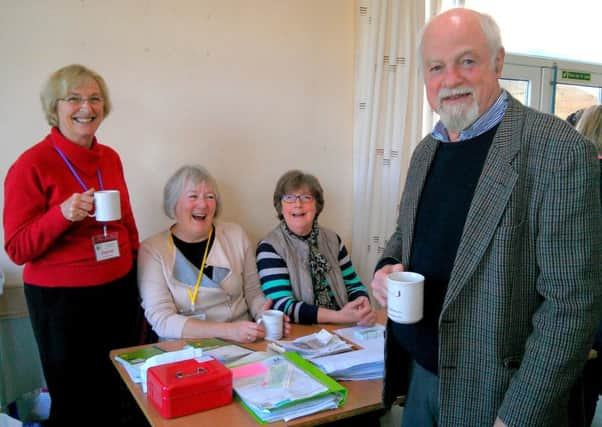Small stretch of coastline with plenty of history


We travelled back to when Stone Age tools were deposited 12 metres below current Solent levels, then came forward through the Glacial Maximum, when melting ice-sheets cut off the Isle of Wight, and on to more recent times.
We learnt that Alwarestock was named in the Doomsday Book and that Henry VIII built Hasleworth Castle as part of his coastal defence.
Advertisement
Hide AdAdvertisement
Hide AdFive 18th century redoubts gave way to the Stokes Bay Lines – Palmerston’s moat, ramparts and batteries (gun-placements) – which in turn fell into disuse, though No. 2 Battery has been re-opened as a nationally-acclaimed Diving Museum.
The moat, still evident in the depression running parallel with the beach, was drained because of mosquitoes, but the bridge which spanned it still gives access from the coast road to Stanley Park and the Alverbank Hotel.
We were reminded that the Alverbank started life as Alver House.
Built by JW Croker who originated the term ‘conservative’, it became a popular weekend retreat for the likes of the Duke of Wellington, Robert Peel, Prince Edward and (allegedly) his ‘companion’ Lilly Langtree.
Advertisement
Hide AdAdvertisement
Hide AdCroker had followed his friend’s lead, Lord Ashburton having built Bay House in 1840.In 1863, the construction of a railway station on the end of a pier linked Gosport to the Isle of Wight.
This station was in use until 1915 but then taken over by the Admiralty who used it as a torpedo station before closing it down in 1922.
The pier itself survived in part until it, too, was demolished in the 1970s.
Gilkicker, a Palmerston fort, remains a shadow of its former glory being now in such a state of neglect that it is almost beyond restoration.
Advertisement
Hide AdAdvertisement
Hide AdNearby, only one of the two ‘sea marks’, first established in 1669 to aid ships navigating the harbour, remains – the other, Kickergill, having been demolished for road development in the 1960s.
Mulberry Harbours, Duplex tanks, a race course, cows grazing, pleasure boats, campers and tea-rooms – Ian (chairman of Friends of Stokes Bay) shared information and photos revealing more modern and diverse aspects of this small stretch of coastline which still, today, attracts sailors, swimmers and kite-surfers to its shingle shore.
n Stokes Bay WI meets in St Mary’s Parish Centre, Green Road, Alverstoke, PO12 2ET, 10am-midday on the third Tuesday of the month.
Visitors are very welcome.